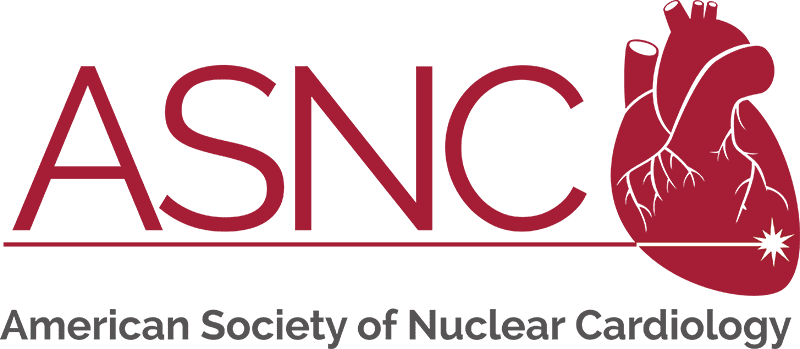Nuclear Cardiology Self-Assessment Program (NCKSAP)
The Nuclear Cardiology Knowledge Self-Assessment Program (NCKSAP) is designed for practitioners who are performing nuclear imaging studies and want to increase their competence for certification, recertification, or general practice improvement.
Each module has a total of 30 multiple-choice questions and includes an answer rationale and references designed to help you assess your knowledge in nuclear cardiology and is available OnDemand for you to access at your convenience.
How Can I Access the Modules?
These modules are available in the All-Access Course Catalog for purchase.
Pricing
Access special member savings!
Not yet a member? Join ASNC today!
Members
Physician & Scientist – $169
International Physician & Scientist – $129
Non-Physician, Trainee, International Emerging Markets – $49
Non-Members
$299
NEW! NCKSAP: Myocardial Viability, 3rd edition
Offers 10 CME/MOC Credits
Expires June 15, 2028
Learning Objectives:
• Explain the role of viability assessment in risk stratification and selection of suitable patients for revascularization procedures.
• Evaluate the strengths and weaknesses of FDG PET, thallium SPECT and technetium 99m tracer SPECT for viability assessment and apply this knowledge to select appropriate patients.
• Explain the necessary preparation procedures of patients for nuclear viability assessment
• Analyze the relationships between nuclear imaging-based assessments of viability and other modalities such as echocardiography and MRI, elucidating their respective roles in clinical decision-making.
NEW! NCKSAP: Endocarditis, 1st edition
Offers 10 CME/MOC Credits
Expires February 9, 2028
Learning Objectives:
- Explain the complementary value of 18F-FDG PET/CT for diagnosis of endocarditis including the added value of evaluating extracardiac infection and septic emboli
- Discuss the role of 18F-FDG PET/CT for the diagnosis of native valve infective endocarditis (IE)
- Discuss the benefits of 18F-FDG PET/CT for the diagnosis of prosthetic valve endocarditis
- Describe the potential use of 18F-FDG PET/CT to evaluate suspected cardiac implantable electronic device (CIED) infection
- Explain that 18F-FDG PET/CT improves diagnostic accuracy to assess possible left ventricular assist device (LVAD) infection
- Identify when to use 18F-FDG PET/CT versus WBC SPECT/CT or other Nuclear Cardiology techniques for evaluation of endocarditis and device infection
NEW! NCKSAP: General Cardiology as it Relates to Image Interpretation, 4th Edition, Part I
Offers 10 CME/MOC Credits
Expires December 31, 2027
Learning Objectives
- Explain high-risk features on stress testing with myocardial perfusion imaging.
- Recognize artifacts and incidental findings on myocardial perfusion imaging.
- Identify the role of nuclear cardiac imaging in patients with heart failure.
- Explain the value and limitations of myocardial perfusion imaging in patients presenting with acute chest pain.
- Identify the role of myocardial perfusion imaging in stable ischemic heart disease.
NEW! NCKSAP: General Cardiology as it Relates to Image Interpretation, 4th Edition, Part II
Offers 10 CME/MOC Credits
Expires December 31, 2027
Learning Objectives
- Discuss the role of myocardial perfusion imaging in stable ischemic heart disease.
- Explain the role of myocardial perfusion imaging in risk stratifying patients.
- Identify appropriate management strategies in patients who undergo myocardial perfusion imaging.
- Recognize artifacts and incidental findings on myocardial perfusion imaging.
NEW! NCKSAP: Hybrid Imaging, 1st Edition
Offers 10 CME/MOC Credits
Expires December 31, 2027
Learning Objectives
- Explain the importance of attenuation correction for nuclear myocardial perfusion imaging studies.
- Evaluate the CT acquisition requirements for attenuation correction, coronary artery calcium scoring and extracardiac findings.
- Describe the added prognostic value of coronary artery calcium in nuclear imaging studies.
- Recognize artifacts from attenuation correction such as misregistration and how to correct them.
- Identify incidental findings that should not be missed.
NEW! NCKSAP: Nuclear Cardiology Tests /Procedures/Protocols, 4th Edition
Offers 10 CME/MOC Credits
Expires December 31, 2027
Learning Objectives
- Explain patient preparation for nuclear cardiology imaging.
- Recognize the indications and contradindications for cardiac stress testing.
- Select protocols for optimal imaging quality and radiation dose reduction.
- Apply appropriate use criteria to select patients for stress testing.
- Differentiate attenuation artifacts from true perfusion defects.
NCKSAP: Sarcoid, 1st Edition
Offers 10 CME/MOC Credits
Expires December 31, 2027
Learning Objectives
- Understand the relationship between cardiac FDG PET imaging patterns and the likelihood of cardiac sarcoidosis
- Describe the optimal patient preparation for cardiac FDG PET imaging for cardiac sarcoidosis
- Demonstrate an understanding of the complementary use of cardiac FDG PET and cardiac MRI imaging in the diagnosis and risk assessment of cardiac sarcoidosis
- Formulate treatment plans for patients with suspected cardiac sarcoidosis informed by the results of cardiac imaging.
NCKSAP: Ventricular Function, 3rd edition
Offers 10 CME/MOC Credits
Expires September 17, 2026
Learning Objectives:
- Understand the role and practical aspects of equilibrium radionuclide ventriculography in assessing left ventricular function
- Understand the role of gated SPECT and PET in coronary artery disease and non-ischemic cardiomyopathies
- Identify the implications of left ventricular function testing for clinical management
- Understand how arrhythmias can affect ECG gating
NCKSAP: Cardiac Amyloidosis, 1st Edition
Offers 10 CME/MOC Credits
Expires February 28, 2026
Learning Objectives
- Describe cardiac amyloidosis subtypes and identify symptoms, associated clinical conditions, and typical non-nuclear imaging features.
- Identify appropriate clinical scenarios for the use of Tc99m-PYP/DPD/HMDP imaging in cardiac amyloidosis.
- Apply appropriate Tc99m-PYP/DPD/HMDP, I123-MIBG, and SPECT/PET amyloid binding tracer standardized imaging techniques to optimize assessment of cardiac amyloidosis.
- Interpret and communicate diagnostic and prognostic findings on Tc99m-PYP/DPD/HMDP, I123-MIBG, and SPECT/PET amyloid binding tracers in the assessment of cardiac amyloidosis.
NCKSAP: Radiation Safety, 3rd Edition
Offers 10 CME/MOC Credits
Expires October 25, 2025
Learning Objectives
- Recognize the NRC requirements for radiation safety
- Describe how to maintain radiation measuring equipment
- Review radiation exposure levels for patients and occupational workers
- Discuss radiation emergency scenarios and appropriate response
NCKSAP: PET MPI, 1st Edition
Offers 10 CME/MOC Credits
Expires August 11, 2025
Learning Objectives
- Understand the basic physics of myocardial perfusion imaging with Positron Emission Tomography
- Understand the clinical applications of PET myocardial perfusion imaging patients with known and suspected coronary artery disease
- Understand the prognostic value of PET myocardial perfusion imaging
- Understand the diagnostic and prognostic value of hybrid PET-CT imaging
- Identify clinical scenarios in which PET imaging is preferred over SPECT imaging
- Understand the clinical applications of myocardial blood flow and myocardial flow reserve
ASNC Disclosure Policy
As an accredited provider of the Accreditation Council for Continuing Medical Education (ACCME), The American Society of Nuclear Cardiology (ASNC) adheres to the ACCME’s Standards for Integrity and Independence in Accredited Continuing Education. In compliance with these standards, it is ASNC’s policy to ensure balance, independence, objectivity, and scientific merit in all of its educational activities through the disclosure of all financial relationships with ineligible companies and mitigation of conflicts of interest. The financial interest or relationships requiring disclosure are outlined in ASNC’s CME Conflict of Interest Policy. All persons who influenced the content of this activity are required to disclose all financial relationships. The American Society of Nuclear Cardiology has reviewed these disclosures and mitigated or managed all identified conflicts of interest through a peer-review process.
Resource Type
Courses
Clinical Topic
Cardiac Amyloidosis, Cardiac PET, Cardiac Sarcoidosis, Hybrid Imaging, Infective Endocarditis, Myocardial Perfusion Imaging (MPI), Myocardial Viability, PET/CT, Radiation Safety, Radiotracers, SPECT, SPECT/CT
Year Revised
2025
Related Resources
PET Case: Cardiac PET in Apical HCM – A Case Series
Case summary: This case series illustrates the value of myocardial blood flow…
PET Case: Role of PET/CT Myocardial Perfusion Imaging in Post-Surgical Evaluation and Management of ALCAPA
Case summary: This case highlights the utility of PET myocardial perfusion imaging…
Ready for PET: Clinical Value of Cardiac PET
This content is an exclusive benefit for ASNC members. If you’re an…

